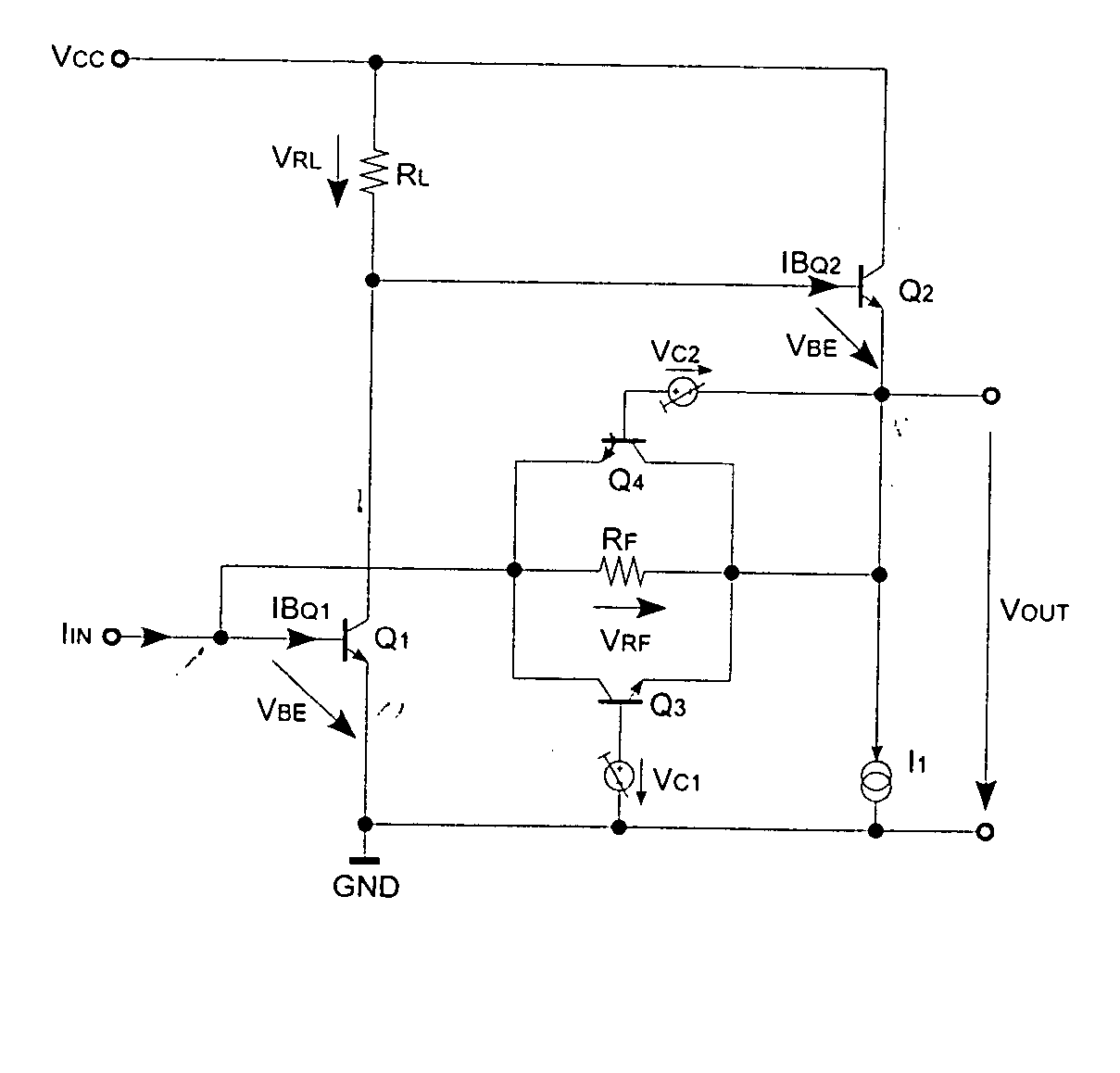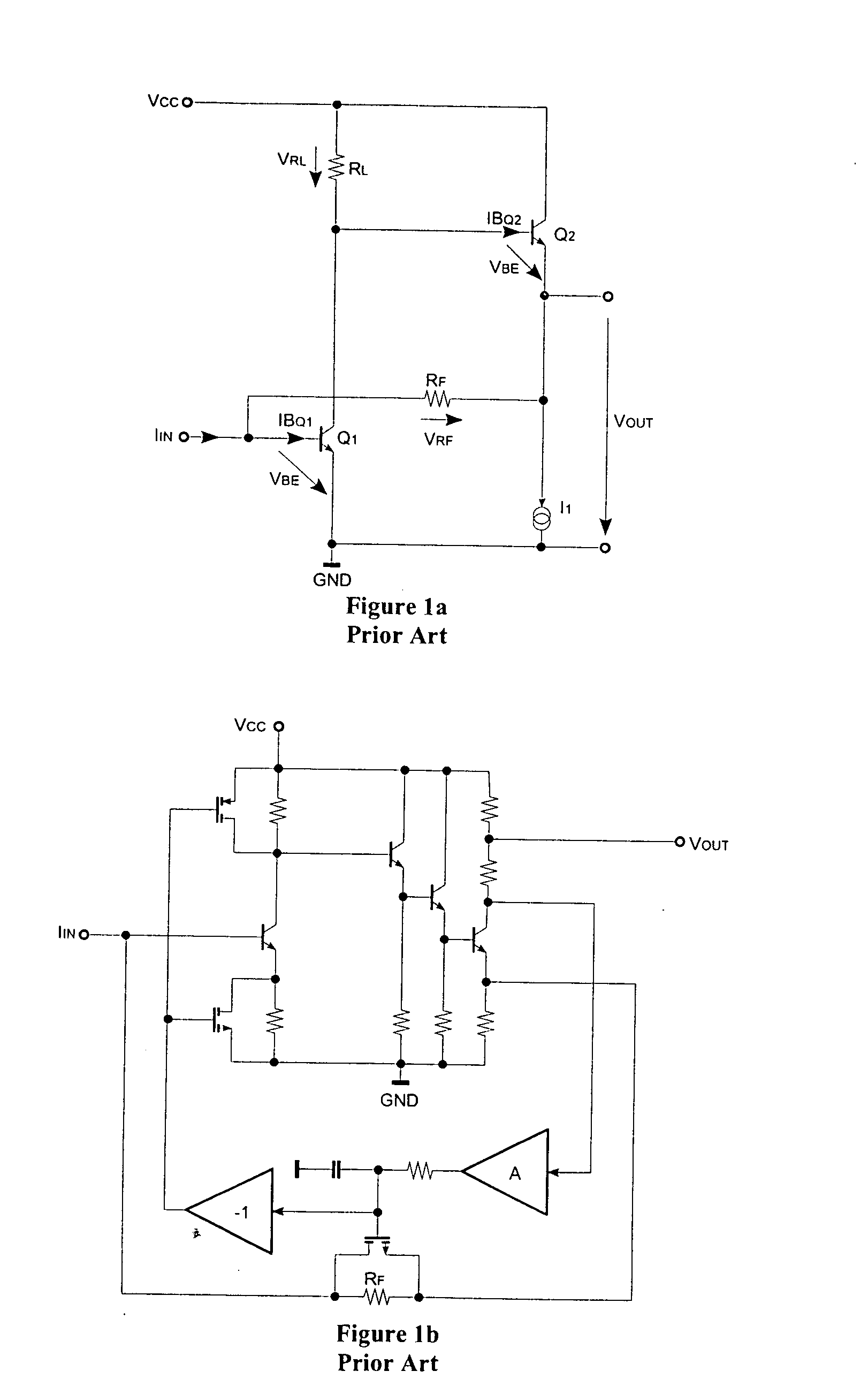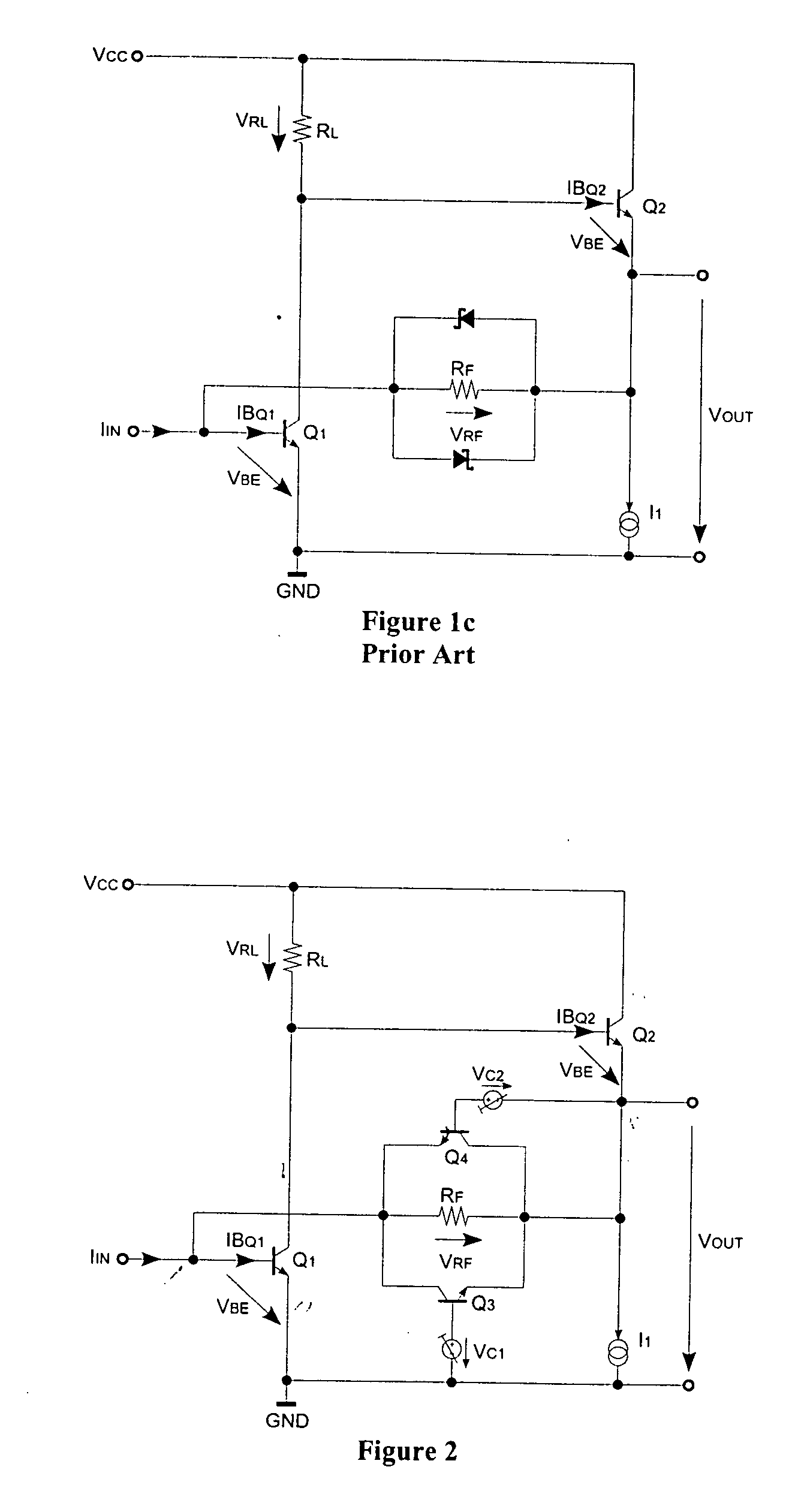Transimpedance amplifier with adjustable output amplitude and wide input dynamic-range
a transimpedance amplifier and output amplitude technology, applied in the field of analog electronic circuits, can solve the problems of expensive dual voltage sources in order to extend the dynamic range, the limitation of the dynamic range is undesirable for most applications, and the limitation of the amplifier bandwidth requirements
- Summary
- Abstract
- Description
- Claims
- Application Information
AI Technical Summary
Benefits of technology
Problems solved by technology
Method used
Image
Examples
Embodiment Construction
[0024] An integratable transimpedance amplifier with adjustable limited output voltage and wide input-current dynamic range according to an embodiment of the present invention is shown in FIG. 2. The circuit arrangement includes a transimpedance amplifier consisting of transistors, a constant current source a load resistor and the feedback resistor with a shunt circuitry consisting of the additional transistors, which are driven for example with electrically adjustable voltage sources.
[0025] The embodiment shown in FIG. 2 provides a bipolar all npn implementation of the present invention. The amplifier stage consists of a common emitter input transistor Q1, with the input current signal IIN connected to the base node, and the collector of said transistor connected to the positive supply voltage VCC by means of a load resistor RL. A second transistor Q2 with its base connected to the collector of the first transistor operates as an emitter follower. The collector of the second trans...
PUM
 Login to View More
Login to View More Abstract
Description
Claims
Application Information
 Login to View More
Login to View More - R&D
- Intellectual Property
- Life Sciences
- Materials
- Tech Scout
- Unparalleled Data Quality
- Higher Quality Content
- 60% Fewer Hallucinations
Browse by: Latest US Patents, China's latest patents, Technical Efficacy Thesaurus, Application Domain, Technology Topic, Popular Technical Reports.
© 2025 PatSnap. All rights reserved.Legal|Privacy policy|Modern Slavery Act Transparency Statement|Sitemap|About US| Contact US: help@patsnap.com



